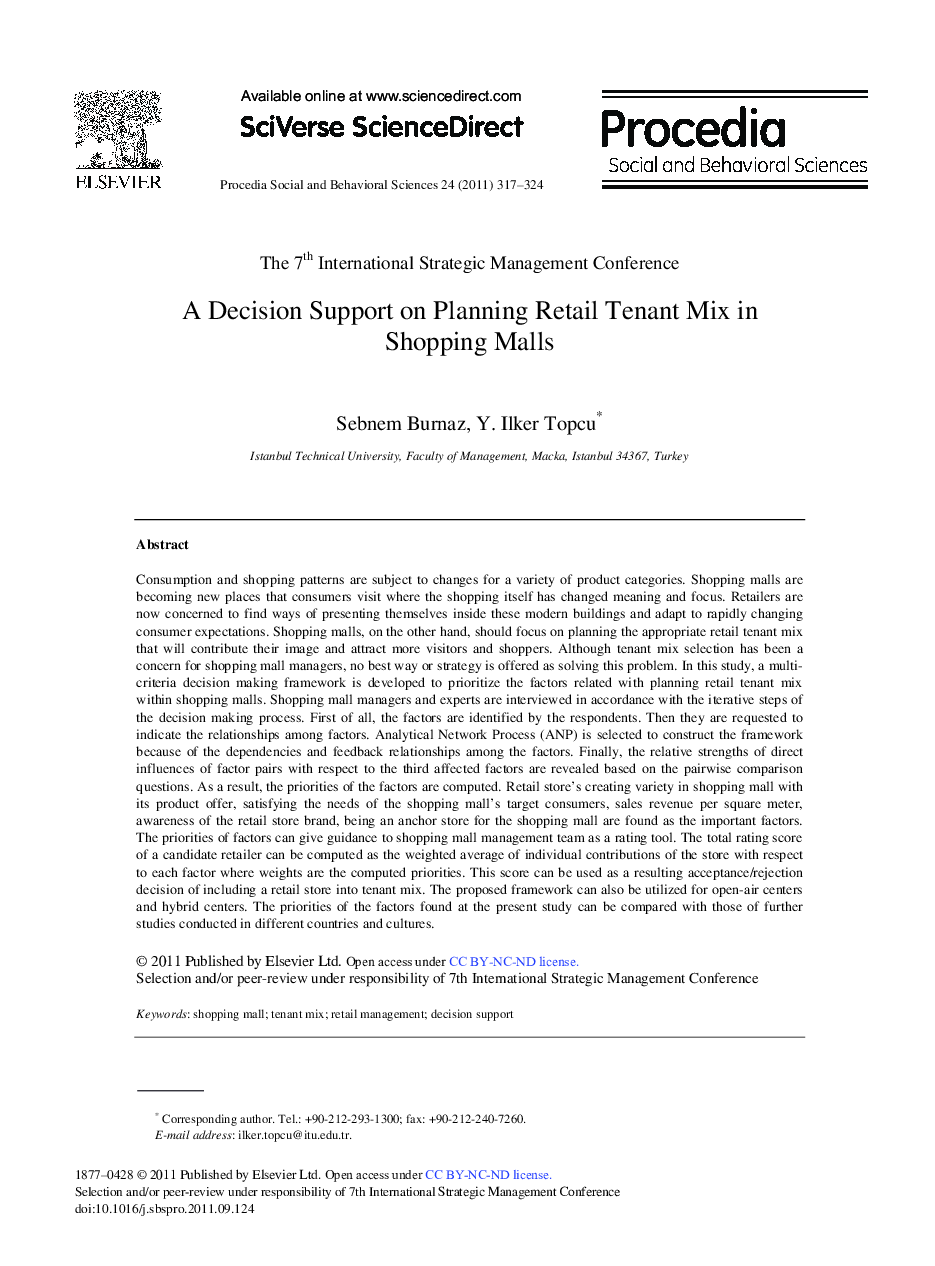| Article ID | Journal | Published Year | Pages | File Type |
|---|---|---|---|---|
| 1123510 | Procedia - Social and Behavioral Sciences | 2011 | 8 Pages |
Consumption and shopping patterns are subject to changes for a variety of product categories. Shopping malls are becoming new places that consumers visit where the shopping itself has changed meaning and focus. Retailers are now concerned to find ways of presenting themselves inside these modern buildings and adapt to rapidly changing consumer expectations. Shopping malls, on the other hand, should focus on planning the appropriate retail tenant mix that will contribute their image and attract more visitors and shoppers. Although tenant mix selection has been a concern for shopping mall managers, no best way or strategy is offered as solving this problem. In this study, a multicriteria decision making framework is developed to prioritize the factors related with planning retail tenant mix within shopping malls. Shopping mall managers and experts are interviewed in accordance with the iterative steps of the decision making process. First of all, the factors are identified by the respondents. Then they are requested to indicate the relationships among factors. Analytical Network Process (ANP) is selected to construct the framework because of the dependencies and feedback relationships among the factors. Finally, the relative strengths of direct influences of factor pairs with respect to the third affected factors are revealed based on the pairwise comparison questions. As a result, the priorities of the factors are computed. Retail store's creating variety in shopping mall with its product offer, satisfying the needs of the shopping mall's target consumers, sales revenue per square meter, awareness of the retail store brand, being an anchor store for the shopping mall are found as the important factors. The priorities of factors can give guidance to shopping mall management team as a rating tool. The total rating score of a candidate retailer can be computed as the weighted average of individual contributions of the store with respect to each factor where weights are the computed priorities. This score can be used as a resulting acceptance/rejection decision of including a retail store into tenant mix. The proposed framework can also be utilized for open-air centers and hybrid centers. The priorities of the factors found at the present study can be compared with those of further studies conducted in different countries and cultures.
